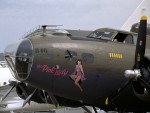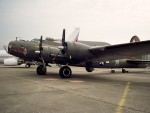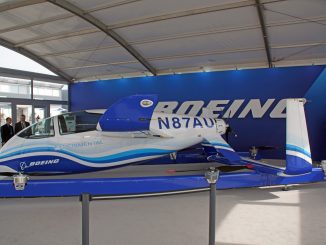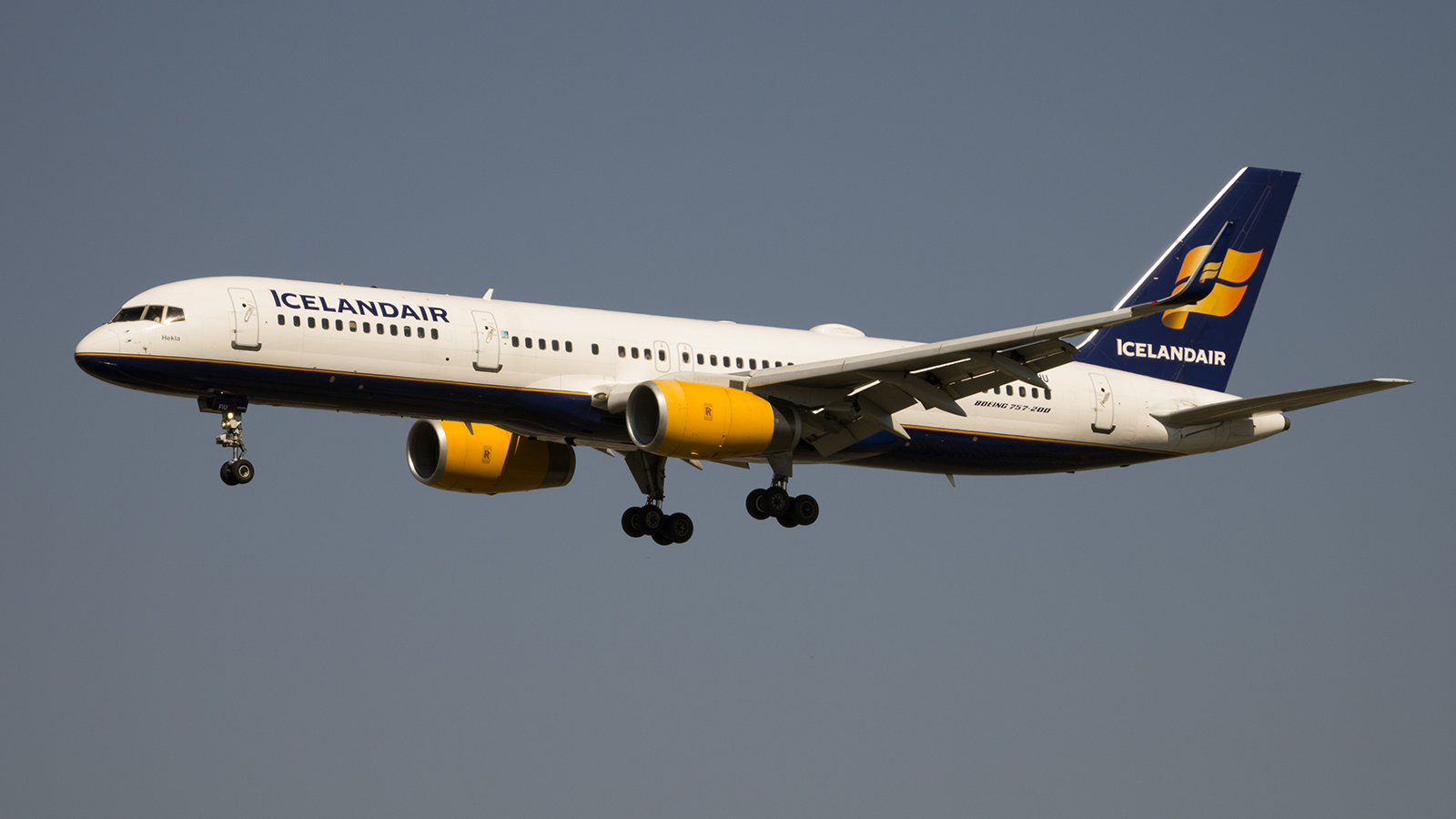
The Boeing B-17 Flying Fortress is a four-engined heavy bomber developed in the 1930s for the United States Army Air Corps (USAAC). The B-17 was primarily employed by the USAAF in the daylight strategic bombing campaign of World War II against German industrial and military targets.
| Role | Heavy bomber |
|---|---|
| National origin | United States |
| Manufacturer | Boeing |
| First flight | 22 July 1935 |
| Introduction | April 1938 |
| Retired | 1968 (Brazilian Air Force) |
| Status | Retired |
| Primary users | United States Army Air Forces Royal Air Force |
| Produced | 1936–1945 |
| Number built | 12,731 |
| Variants |
|
| Developed into | Boeing 307 Stratoliner |
Specifications (B-17G)
- Crew: 10: Pilot, co-pilot, navigator, bombardier/nose gunner, flight engineer/top turret gunner, radio operator, waist gunners (2), ball turret gunner, tail gunner
- Length: 74 ft 4 in (22.66 m)
- Wingspan: 103 ft 9 in (31.62 m)
- Height: 19 ft 1 in (5.82 m)
- Wing area: 1,420 sq ft (131.92 m2)
- Airfoil: NACA 0018 / NACA 0010
- Empty weight: 36,135 lb (16,391 kg)
- Gross weight: 54,000 lb (24,500 kg)
- Max takeoff weight: 65,500 lb (29,700 kg)
- Aspect ratio: 7.57
- Powerplant: 4 × Wright R-1820-97 “Cyclone” turbosupercharged radial engines, 1,200 hp (895 kW) each
- Propellers: 3-bladed Hamilton-Standard constant-speed propeller
Performance
- Maximum speed: 287 mph (462 km/h, 249 kn)
- Cruise speed: 182 mph (293 km/h, 158 kn)
- Range: 2,000 mi (3,219 km, 1,738 nmi) with 6,000 lb (2,700 kg) bombload
- Service ceiling: 35,600 ft (10,850 m)
- Rate of climb: 900 ft/min (4.6 m/s)
- Wing loading: 38.0 lb/sq ft (185.7 kg/m2)
- Power/mass: 0.089 hp/lb (150 W/kg)
Armament
- Guns: 13 × .50 in (12.7 mm) M2 Browning machine guns in 9 positions (2 in the Bendix chin turret, 2 on nose cheeks, 2 staggered waist guns, 2 in upper Sperry turret, 2 in Sperry ball turret in belly, 2 in the tail and one firing upwards from radio compartment behind bomb bay)
- Bombs:
- Short range missions (<400 mi): 8,000 lb (3,600 kg)
- Long range missions (≈800 mi): 4,500 lb (2,000 kg)
- Overload: 17,600 lb (7,800 kg)
Photos Rob Vogelaar and Marcel van Leeuwen

















